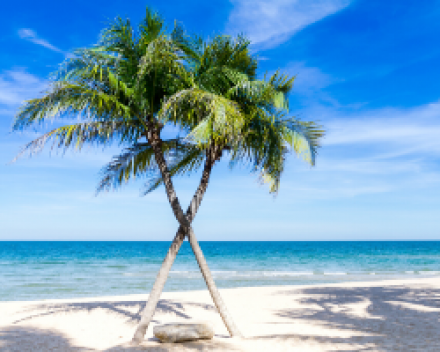Trekking in Sapa: An Adventurous Journey Through Northern Vietnam's Natural Beauty
2Sapa is one of the ideal destinations for trekking in Vietnam thanks to its stunning scenery of the mountains, streams, rice terrace fields, etc. By joining a trekking tour, you can immerse yourself in nature, visit Sapa ethnic minorities' villages, and learn more about their daily life and culture. Whether you are an experienced trekker or a novice looking for an exciting challenge, trekking in Sapa promises an unforgettable journey. Let’s learn things for a wonderful trekking trip in Sapa with Handspan Travel Indochina!
Through this blog post, you will find the following pieces of information.
The best time for trekking in Sapa
Due to the flavor weather conditions, Sapa is an ideal place for trekking lovers all year round. You can choose to travel to Sapa and join trekking at any time, depending on your preferences and tolerance for different weather conditions. Let’s see Sapa through each season to decide which time to join trekking in Sapa.
Sapa in Spring
Spring in Sapa lasts from March to May. At this time, the weather is cool and mild with temperatures ranging from 5 Celsius degrees to 25 Celsius degrees. This season is known for its vibrant landscapes, with cherry blossoms and other flowers in full bloom, adding a splash of color to the scenery. Besides, the skies are usually clear, offering stunning views of the terraced rice fields and surrounding mountains.
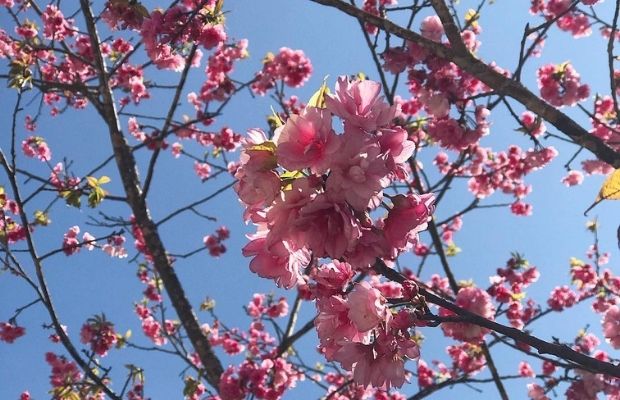
Peach blossom in Sapa in spring
The summer in Sapa
The summer in Sapa is from June to August. At this time, Sapa is filled with the green color of the forest and the growing rice terraces. Under the mild weather, it is perfect to trek through the villages and appreciate majestic limestone mountains, the wild and pristine beauty of the forest, and winding streams along the villages.
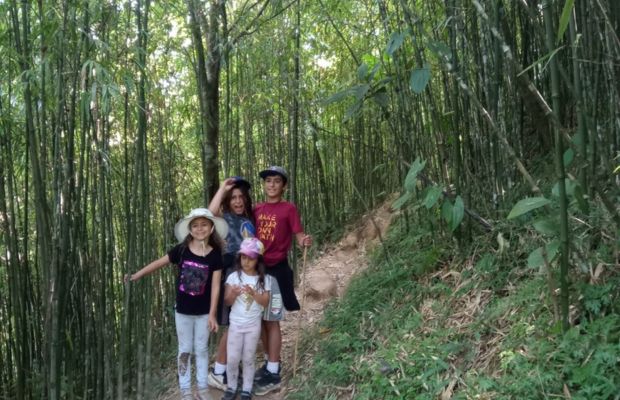
Trekking in Sapa in the summer
Sapa in Autumn
Autumn, which lasts from September to November, is the best time for trekking in Sapa due to the pleasant weather and stunning scenery. The temperatures range from 10 Celsius degrees to 20 Celsius degrees. The weather is cool and dry, perfect for outdoor activities. This season is harvest time, and the terraced fields turn golden yellow, creating a stunning landscape that is perfect for photography.
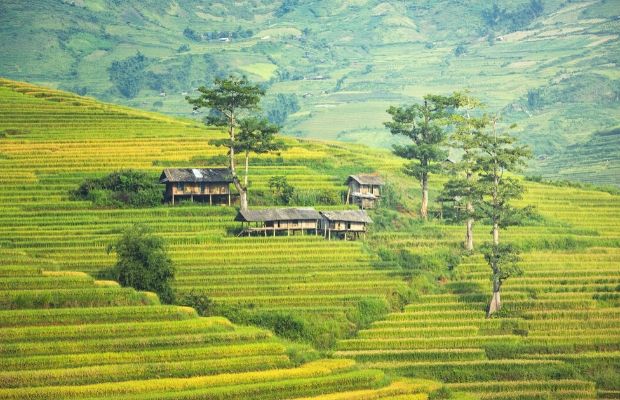
Golden terraced rice fields in Hoi An
The winter in Sapa
Although Sapa in winter is not as glistening as in spring, winter is still a favorable time to visit Sapa. The winter in Sapa starts in December and ends in February the following year. In winter, Sapa floats in clouds and mist, and sometimes, the town is covered with snow. Trekking in Sapa in winter can offer a unique experience, with the possibility of encountering frost and even snow at higher altitudes.
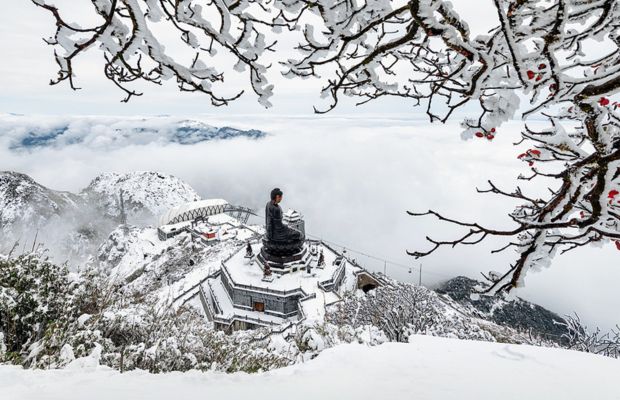
Sapa in winter
For more detailed information about the ideal time to visit Sapa, please refer to our blog post here: Sapa through each season - What is the best time to visit Sapa? Overall, no matter which season you choose to join trekking in Sapa, Sapa will reward you with its stunning natural beauty and rich cultural experiences.
Trekking in Sapa: the best trekking routes
Sapa offers a diverse range of trekking routes that cater to various levels of experience and fitness. From leisurely village walks to challenging mountain climbs, there's a trail for every adventurer. Trekking in Sapa, you can choose these routes below.
Sapa Town - Cat Cat Village - Sin Chai Village trekking route
- Time: one day
- Route distance: about 8 kilometers
- Level: Easy
Trekking from Sapa Town to Sin Chai Village and back is one of the accessible trekking routes in Sapa you should join. From the center of Sapa (Sapa Stone Church), you will walk to Cat Cat Village, two kilometers away. The road leading to Cat Cat Village is exceptionally charming with magnificent mountains and terraced rice fields along two sides. Coming here, besides admiring the scenery, you will also have a chance to experience and learn about the Hmong people’s culture, customs, and traditional costumes.
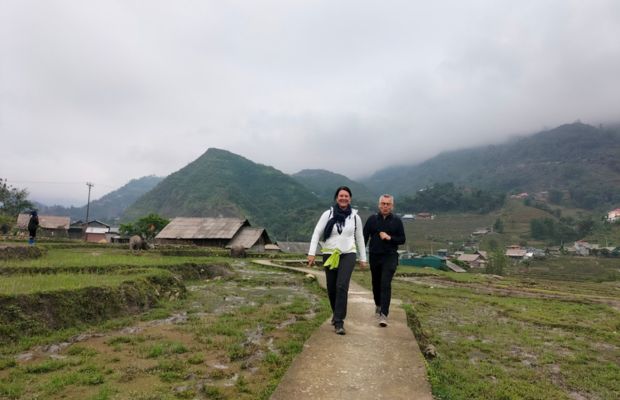
Trekking in Sapa
Walking about three kilometers from Cat Cat Village, you will reach Sin Chai Village, surrounded by the Hoang Lien Son mountain range. The village is more pristine and peaceful compared to Cat Cat Village. This village is where you can appreciate traditional houses built from Po mu trees wood, simple farm tools in front of the house, and the daily life of local people here.
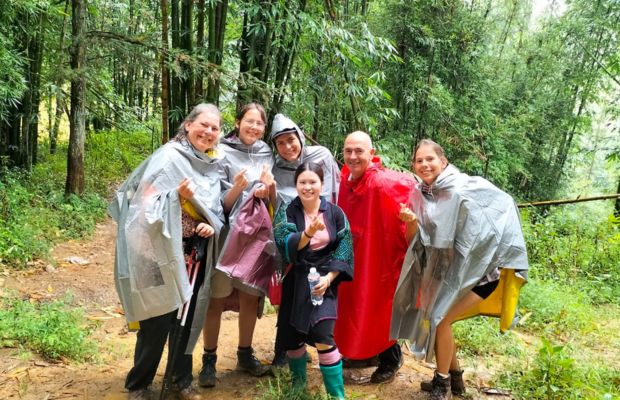
Trekking in Sapa
Sapa Town - Y Linh Ho Village - Lao Chai Village - Ta Van Village
- Time: 2 days, one night
- Distance: about 20 - 30 kilometers
- Level: Medium
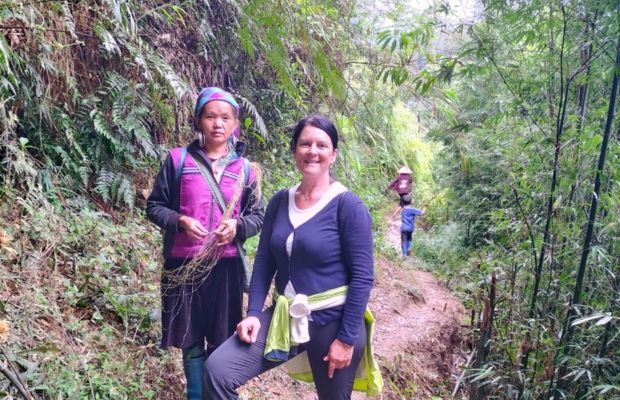
Trekking in Ta Van
When trekking in Sapa, you can also choose the trekking route from Sapa Town to Ta Van Village. This route will be an ideal choice if you have high endurance and good health and want to challenge yourself with a higher level of trekking route. Along the way, you can marvel at the rice fields, streams, forests, and villages. The recommended itinerary for this route is as below.
- First Day: Sapa Town - Tram Ton - Love Waterfall - Silver Waterfall - Cat Cat Village
- Second Day: Cat Cat Village - Y Linh Ho Village - Lao Chai Village - Ta Van Village - Sapa Town
By choosing this route, you will have a chance to trek through the primeval forest and admire the stunning wild landscape, and breathe in the fresh air. Besides, you can get familiar with Dao, Mong, Giay, and Tay ethnic minorities in Sapa.
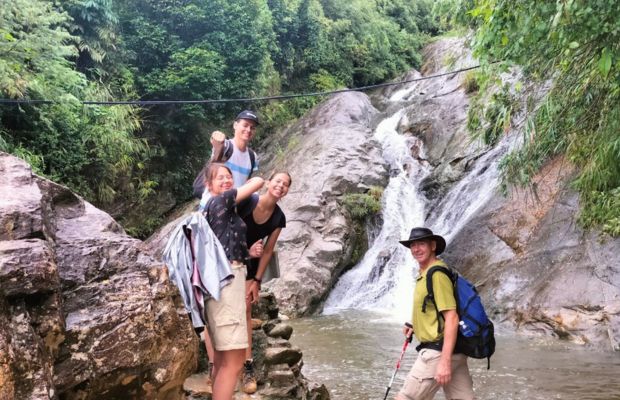
Love Waterfall in Sapa
Fansipan trekking route
- Time: 2 days, 1 night
- Distance: 11.2 kilometers
- Level: Hard
Fansipan trekking route is among the hard routes for trekking in Sapa. Located at the height of 3.134 meters above sea level, Fansipan Mountain is the highest mountain in Vietnam. After reaching Tram Ton Pass, you can start climbing Fansipan Mountain. On this trekking route, you will see the wonderful scenery of the surrounding Northwest mountains. The route has two milestones for you to mark your trekking journey. The first milestone is at an altitude of 2,200 meters. After climbing for 4 to 5 hours, you will reach the second milestone at an altitude of 2,800 meters.
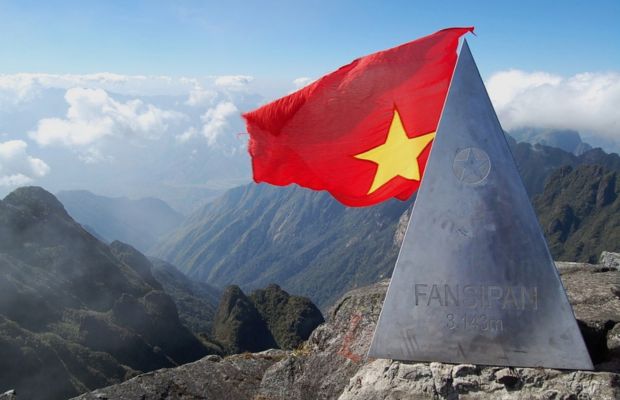
Fansipan Mountain trekking
Besides the trekking route departing from Tram Ton Pass, you can also choose the route departing from Cat Cat Village which has higher difficulty and challenge. The terrain of this route is constantly changing with obstacles along the way. Therefore, it will be more suitable for trekkers with extensive climbing experience.
Overall, no matter which route you choose, trekking in Sapa will still bring you interesting experiences. So, let’s consider your physical strength, health and schedule to choose the most suitable trekking route.
Tips for trekking in Sapa
Trekking in Sapa is an exhilarating experience, offering stunning natural landscapes and rich cultural encounters. Let’s refer to these tips below for a safe, enjoyable, and respectful trek.
Preparing physically and mentally
Like a trekking trip at any other place, trekking in Sapa requires you to prepare well and ensure that your physical fitness is suitable for your chosen trekking route. Some routes are easy and ideal for beginners, while others, like Fansipan Mountain, are challenging and require good physical condition. Besides, be prepared for changing weather conditions, potential language barriers, and the physical demands of trekking.
Packing appropriately
Before trekking in Sapa, you should prepare the necessary items to prevent possible situations. Let’s refer to these packing lists below.
- Necessary items
When trekking in Sapa, don’t forget to bring your hiking shoes and poles, camping tents, pins, sleeping bags, travel backpacks, maps, and GPS navigation tools. Besides, first-aid kits including bandages, antiseptics, pain relievers, and any personal medications are also needed.
- Clothing
It is recommended that you wear moisture-wicking, quick-dry clothing in layers. If you go trekking in Sapa in the summer, remember to add a sun protection shirt while in winter, you will need a thermal jacket. In addition, you may want to bring sleepwear made of comfortable material, preferably long-sleeved clothing if you are going on a long trek and have to stay overnight at a tent.
- Water and snacks
Joining a trekking trip, water and snacks are necessary to maintain strength. You should pack instant foods such as sausages, cakes, pate, bread, and dry food. Besides, you will need water, mineral salt water or glucose water in case you are tired and exhausted.
- Other personal belongings
Don’t forget to bring your personal documents such as identity card/citizen identification card, driver's license, and personal hygiene items such as toothbrush, toothpaste, and towel. Also, sunscreen and insect spray are also needed for your trekking.
Hiring a local guide
If you are not familiar with mountainous trekking routes, it will be better if you have a local guide. They will provide valuable insights into the culture and history of the area and help navigate the trails and communicate with local villagers. Hiring a guide is also a way to support the local economy.
Practicing responsible trekking in Sapa
Sapa is a treasure trove of natural beauty and cultural richness. To ensure that this unique destination remains pristine and enjoyable for future generations, it's crucial to practice responsible trekking. Here are some ways for you to practice responsible trekking in Sapa.
Respect local cultures and traditions
Interacting with the locals and respecting their cultures and traditions is an ideal way to practice responsible trekking in Sapa. While trekking, you can drop in the villages and make friends with local people. You may want to approach interactions with curiosity and respect and avoid imposing your beliefs or customs. Besides, you can support local businesses by buying handicrafts, food, and services from local vendors.
Staying on designated trails
By sticking to established paths, you can avoid trampling plants and disturbing wildlife habitats. Shortcuts can lead to soil erosion and damage delicate ecosystems. If you have a local guide, trust their knowledge of the terrain and follow their instructions. Otherwise, you should research carefully and choose your path.
Leaving no trace
Let’s carry a small bag for your waste and dispose of it properly when you return to town. Don’t arbitrarily litter, especially plastic waste.
By following these principles of responsible trekking, you can help preserve the natural beauty and cultural integrity of Sapa. Responsible trekking not only protects the environment but also enriches your experience by fostering meaningful interactions with local communities and ensuring the sustainability of this remarkable region.
In conclusion, trekking in Sapa is more than just a physical journey. It's a chance to connect with nature, explore diverse cultures, and challenge yourself in one of Vietnam's most beautiful regions. Whether you're drawn by the stunning landscapes, the rich cultural experiences, or the thrill of adventure, Sapa has something to offer every trekker. Let’s pack your bags and get ready for an unforgettable trekking adventure in Sapa. If you want to book Sapa trekking tour or request a tailor-made itinerary, please do not hesitate to contact the Handspan team.
__logo.png)
__hanoi-water-puppets.jpg)
__angkor-wat-blue-reflections.jpg)
__vientiane-buddha-park-monks.jpg)
__bagan-dhammayazika-dusk.jpg)
